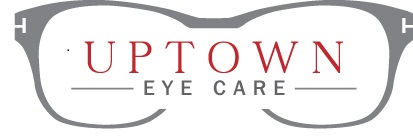114 N State St, Westerville OH 43081 614-882-0851 [email protected]
- Navigation
- Home
- Forms
- Services
- » Services Overview
- » Thorough Eye Examinations
- » Low Vision Evaluations
- » Optical Boutique
- » Contact Lens Fitting
- » Exams for Kids
- » Infant Exams
- About
- » About Our Office
- » Staff
- » History of the Location
- » Sharing Sight
- Products
- » Frames
- » Spectacle Lenses
- » » Lens Overview
- » » Lens Design
- » » Lens Material
- » » Lens Coatings
- » Low Vision Devices
- » Contact Lenses
- » Other Products
- Contact Us
These are examples of low vision products that you will be shown at your evaluation. We will find the strength, shape, light source and style that works best for your unique visual needs.
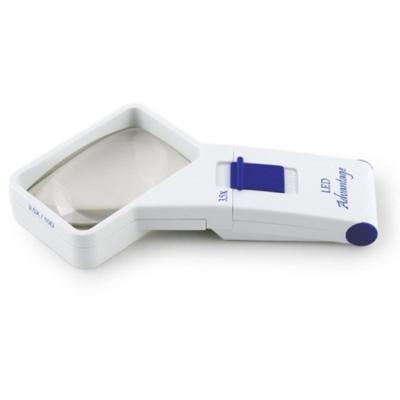
Handheld magnifiers are great for portability and quick viewing. These are available in a variety of powers and styles. Dr. Bauder recommends (almost exclusively) LED illuminated versions as the increased lighting makes a huge improvement for patients with low vision in most cases. The downfall of these types of products is that as the power increases the size of the lens decreases and the working distance from your eyes gets smaller. Severe cases of vision loss often are not able to be corrected with a handheld magnifier alone.
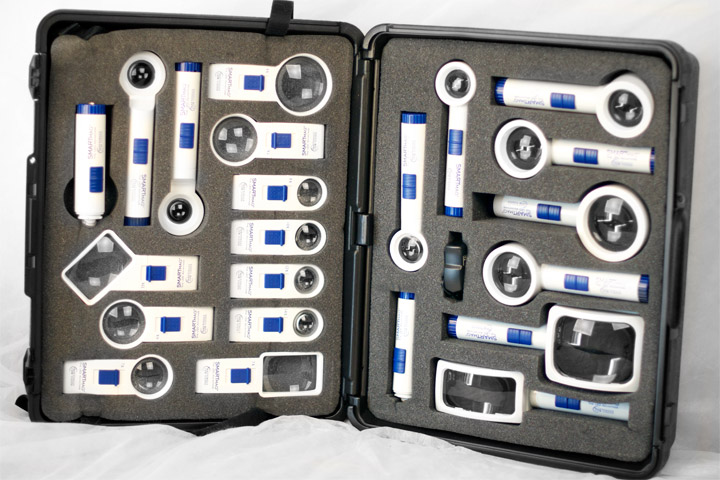
Stand magnifiers are great for longer periods of reading, especially for those who may have arthritis or difficulty holding a magnifier in their hands. Long periods of near work also makes it difficult to keep your place and keep the proper working distance from the page. Stand magnifiers sit directly on the work surface and can be slid along the page for greater ease of use. These are all illuminated, and Dr. Bauder recommends the brighter LED light source.
Pocket Magnifiers

Pocket magnifiers are small and very portable. These are great to keep in your purse or pocket for on the go. The big limitation is they are only lower powered, and many are not illuminated. For patients on the earlier side of vision loss, these are a great, compact and affordable option.
Bar Magnifiers
The benefit of a bar magnifier is it allows you to see an entire row at a time, but the magnification is often very low. When using magnification, it is easy to lose your place, so patients often like this design if it is strong enough for their needs.
Telescopes
These telescopes are used for distance spotting. If you have trouble seeing aisle numbers at a store, or recognizing faces, seeing a projection screen across the room, this is the device that can help.
Portable Video Magnifiers
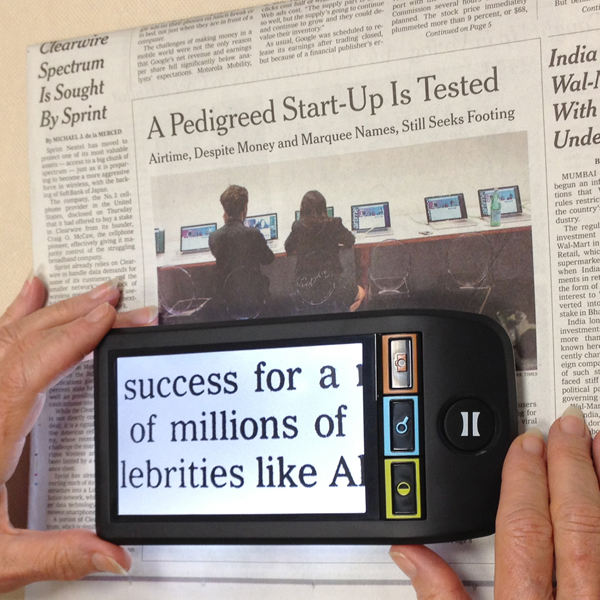
For patients with more severe levels of vision loss, video magnifiers are the best option. As the magnification increases with a traditional magnifier, the size decreases. At times, a patient may only see one to two letters at a time. It becomes increasingly difficult to keep track of the place you are reading and patients lose interest quickly in trying to read for an extended amount of time. A video magnifier keeps the same large screen, but you can change between different magnifications, contrast levels and and colors with the click of a button. The high definition video screens provide much more clear contrast than a typical magnifier as there is less distortion.
CCTV
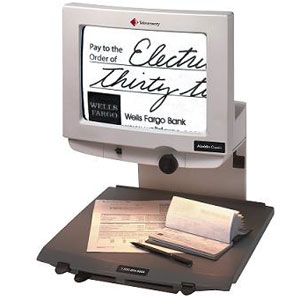
A CCTV is a larger scale version of the video magnifier mentioned above. Instead of a portable screen, a CCTV is a large stationary screen, similar to a computer monitor. There are many makes and models of these, all with different features. Some can even switch modes to allow distance viewing as well as near. With a CCTV, you can view full color photographs, write letters, and view print from 2x all the way up to 20x+ usually. There is much versatility and this gives ultimate visual outcomes for our low vision patients. Dr. Bauder is planning to get a model CCTV to keep at the office for patients to demo so they can experience the freedom it brings.
Hours
Current Hours:
Monday: 9am- 4pm
Tuesday: 9am - 5pm
Wednesday: 9am - 6pm
Thursday: 9am - 4pm
Friday: Closed
Closed 12-1 for lunch daily
Saturday: 1st Saturday 8am -12 pm (by appointment only and hours may vary)
Sunday: Closed
Contact
